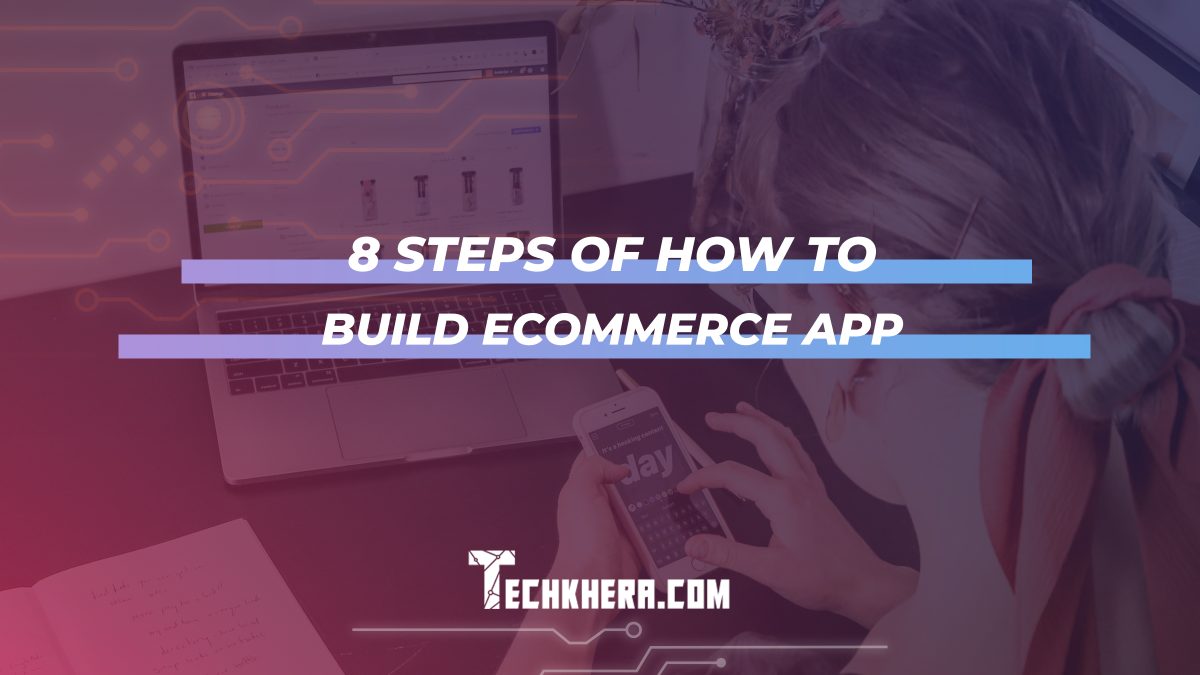
8 Steps of How to Build eCommerce App
In today’s fast-paced digital world, having an eCommerce app is no longer just an option for businesses – it’s a necessity. The convenience and accessibility provided by mobile apps have reshaped the way consumers shop online. If you’re looking to capitalize on this trend and build an eCommerce app for your business, this comprehensive guide will walk you through the essential steps to create a successful app that resonates with your target audience.

Contents
- 1 1. Define Your eCommerce App’s Purpose and Goals
- 2 2. Market Research and Competitive Analysis
- 3 3. Choose the Right Development Approach
- 4 4. Design the User Interface (UI) and User Experience (UX)
- 5 5. Develop the eCommerce App
- 6 6. Integrate Payment Gateways and Security
- 7 7. Test Thoroughly
- 8 8. Launch and Market Your eCommerce App
1. Define Your eCommerce App’s Purpose and Goals
Before you dive into the technical aspects of app development, it’s crucial to have a clear understanding of your eCommerce app’s purpose and objectives. Ask yourself:
– What products or services will your app offer?
– Who is your target audience?
– What unique value will your app provide to users?
– What are your revenue and growth goals?
Answering these questions will serve as the foundation for your app’s development strategy.
2. Market Research and Competitive Analysis
In the competitive world of eCommerce, thorough market research and competitive analysis are indispensable. Study your target market, identify your competitors, and assess their strengths and weaknesses. This information will help you refine your app’s features, pricing, and marketing strategies to gain a competitive edge.
3. Choose the Right Development Approach
When it comes to building an eCommerce app, you have two primary development approaches to consider:
Native App Development:
– Native apps are built specifically for a single platform, such as iOS (using Swift or Objective-C) or Android (using Java or Kotlin).
– They offer the best performance, as they are optimized for the platform’s hardware and software.
– Native apps provide access to platform-specific features, such as push notifications and camera integration.
Cross-Platform App Development
– Cross-platform apps are developed using frameworks like React Native, Flutter, or Xamarin.
– They allow you to write code once and deploy it on multiple platforms, saving development time and resources.
– While they may not offer the same level of performance as native apps, they provide a cost-effective solution for reaching a broader audience.
Choose the development approach that aligns with your budget, timeline, and target audience.
4. Design the User Interface (UI) and User Experience (UX)
The design of your eCommerce app plays a pivotal role in attracting and retaining users. Focus on creating an intuitive and visually appealing UI/UX that enhances the shopping experience. Key design elements to consider include:
– Clear and user-friendly navigation
– Visually appealing product listings
– Streamlined checkout process
– High-quality images and product descriptions
– Responsive design for various screen sizes

5. Develop the eCommerce App
The development phase involves writing code, implementing features, and ensuring the app’s functionality aligns with your business goals. Whether you choose native or cross-platform development, your team of developers will work on coding, testing, and refining the app.
6. Integrate Payment Gateways and Security
The heart of any eCommerce app is its payment processing system. Integrate reliable and secure payment gateways to allow customers to make purchases seamlessly. Ensure your app adheres to industry-standard security practices, encrypting user data and payment information to protect against cyber threats and data breaches.
7. Test Thoroughly
Thorough testing is a critical step in the app development process. Test your eCommerce app for functionality, performance, usability, and security. Fix any bugs or issues that arise during testing to ensure a smooth user experience.
8. Launch and Market Your eCommerce App
Once your app is polished and ready for the market, it’s time to launch and promote it. Here’s a brief overview of the launch and marketing steps:
a. App Store Submission:
– For iOS: Submit your app to the Apple App Store, following their guidelines and requirements.
– For Android: Publish your app on the Google Play Store, adhering to their submission guidelines.
b. Marketing Strategies:
– Utilize digital marketing channels like social media, email marketing, and pay-per-click (PPC) advertising to promote your app.
– Encourage user reviews and ratings on app stores to improve visibility.
– Implement app store optimization (ASO) techniques to enhance discoverability within the app stores.
c. Post-Launch Monitoring and Updates:
– Continuously monitor user feedback and app analytics to identify areas for improvement.
– Regularly release updates with bug fixes, new features, and enhancements to keep users engaged and satisfied.
By following these eight essential steps, you can successfully create and build eCommerce app that caters to your target audience, offers a seamless shopping experience, and drives revenue for your business. Remember that app development is an ongoing process, and staying attuned to user feedback and market trends will help you maintain a competitive edge in the ever-evolving world of mobile commerce.
